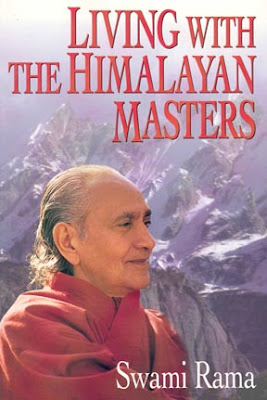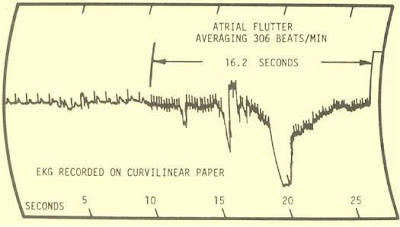***********************
SIDDHI'S IN YOGA
Siddhi is a Sanskri word that literally means "accomplishment", "attainment", or "success". It is also used as a term for spiritual power (or psychic ability). Siddhi Powers are sometimes gained by focusing on various chakras causing an activation of that specific energy center. Siddhi powers are sometimes experienced as a result. . In an ancient tradition of Enlightenment such as that which has been preserved by the enlightened monks (the siddha purushas), of Satyaloka Monastery, siddhi powers as well as enlightenment were often passed down from master to seeker through diksha (spiritual initiation). The diksha can be likened to a seed. It may take effect at once or could stay latent for years. Perhaps it will never take root. There are many variables. Diksha is part of an triad employed in ancient shamanistic cultures to help thrust the seeker into a permanent state of enlightenment. This triad is diksha, sadhana (spiritual practice such as yoga & meditation), and maha sutras. Following is a listing of siddhis that may occur in the Journey to Enlightenment or in working with the various chakras.
 1)Anima- reducing one's body even to the size of an atom
1)Anima- reducing one's body even to the size of an atom
2)Mahima-expanding one's body to an infinitely large size
3 )Garima-becoming infinitely heavy
4) Laghima- becoming almost weightless
5) Prapti- having unrestricted access to all places
 1)Anima- reducing one's body even to the size of an atom
1)Anima- reducing one's body even to the size of an atom2)Mahima-expanding one's body to an infinitely large size
3 )Garima-becoming infinitely heavy
4) Laghima- becoming almost weightless
5) Prapti- having unrestricted access to all places
6 )Prakamya- realizing whatever one desires
7 )Istva- possessing absolute lordship
8 )Vastva- the power to subjugate all.
- - - - - - - - - - - - - - - - - - -
- - - - - - - - - - - - - - - - - - -
Nine main Siddhis
 1-Parkaya Pravesha: Parkaya Pravesh means one’s soul entering into another sentient being . Through this knowledge even a dead body can be brought to life.
1-Parkaya Pravesha: Parkaya Pravesh means one’s soul entering into another sentient being . Through this knowledge even a dead body can be brought to life.
 1-Parkaya Pravesha: Parkaya Pravesh means one’s soul entering into another sentient being . Through this knowledge even a dead body can be brought to life.
1-Parkaya Pravesha: Parkaya Pravesh means one’s soul entering into another sentient being . Through this knowledge even a dead body can be brought to life.2- Haadi Vidya: This Vidya or knowledge has been mentioned in several ancient texts. On acquiring this Vidya, a person feels neither hunger nor thirst, and can remain without eating food or drinking water for several days at a stretch.
3- Kaadi Vidya: Just as one does not feel hungry or thirsty in Haadi Vidya, similarly in Kaadi Vidya a person is not affected by change of seasons, i.e. by summer, winter, rain, etc. After accomplishing this Vidya, a person shall not feel cold even if he sits in the snow-laden mountains, and shall not feel hot even if he sits in the fire.
4-Vayu Gaman Siddhi: Through this Siddhi a person can become capable of flying in the skies and traveling from one place to another in just a few seconds.
5-Madalasa Vidya: On accomplishing this Vidya, a person becomes capable of increasing or decreasing the size of his body according to his wish. Lord Hanuman had miniaturized his body through this Vidya while entering the city of Lanka
6-Kanakdhara Siddhi: One can acquire immense and unlimited wealth of knowledge and understanding through this Siddhi.
7-Prakya Sadhana: Through this Sadhana a Yogi can direct his disciple to take birth from the womb of a woman who is childless or cannot bear children.
8-Surya Vigyan: This solar science is one of the most significant sciences of ancient India This science has been known only to the Indian Yogis; using it, one substance can be transformed into another through the medium of sun rays.
9-Mrit Sanjivani: this science allow people to bring back the dead to life
+++++++++++++++++++
9-Mrit Sanjivani: this science allow people to bring back the dead to life
+++++++++++++++++++
Ten Secondary Siddhis
 Lord Krishna describes the Ten Secondary Siddhis as:
Lord Krishna describes the Ten Secondary Siddhis as:
anurmi-mattvam: Being undisturbed by hunger, thirst, and other bodily disturbances
dura-sravana: Hearing things far away
dura-darśanam: Seeing things far away
manah-javah: Moving the body wherever thought goes (teleportation)
kama-rupam: Assuming any form desired
para-kaya praveśanam: Entering the bodies of others
sva-chanda mrtyuh: Dying when one desires
devanam saha krida anudarsanam: Witnessing and participating in the pastimes of the Apsaras
yatha sankalpa samsiddhi: Perfect accomplishment of one's determination
ajna apratihata gatih: Orders or Commands being unimpeded
 Lord Krishna describes the Ten Secondary Siddhis as:
Lord Krishna describes the Ten Secondary Siddhis as:anurmi-mattvam: Being undisturbed by hunger, thirst, and other bodily disturbances
dura-sravana: Hearing things far away
dura-darśanam: Seeing things far away
manah-javah: Moving the body wherever thought goes (teleportation)
kama-rupam: Assuming any form desired
para-kaya praveśanam: Entering the bodies of others
sva-chanda mrtyuh: Dying when one desires
devanam saha krida anudarsanam: Witnessing and participating in the pastimes of the Apsaras
yatha sankalpa samsiddhi: Perfect accomplishment of one's determination
ajna apratihata gatih: Orders or Commands being unimpeded
"Loka samastha sukhino bhavanthu"




